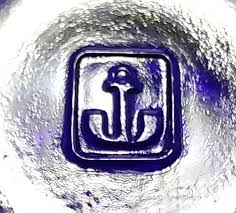How to Date Anchor Hocking Glass: A Collector’s Guide

Anchor Hocking is one of the most beloved American glass companies, and chances are you’ve spotted their pieces in thrift stores, antique shops, or even your grandmother’s kitchen cabinet. But here’s the real challenge: how do you actually date Anchor Hocking glass? With over a century of production and countless patterns, it’s not always easy to know whether your piece is from the 1930s, the 1960s, or later.
Don’t worry—I’ve got you covered. Here’s a simple guide to help you put a timeline on your Anchor Hocking treasures.
1. Look at the Logo
Anchor Hocking logos have changed through the decades, and they’re one of the quickest ways to spot the era of your piece:
- 1905–1937: Early glass usually wasn’t marked, so no logo may mean early production.
- 1937–1968: Look for the “H inside an anchor” mark—this is the classic logo most collectors recognize.
- 1968–1980s: The logo simplified into a modern anchor shape with “Anchor Hocking” spelled out.
- 1980s–present: You’ll often see “Anchor Hocking” printed or stamped without an anchor symbol.
Pro tip: Flip your piece over and check the base for logos, numbers, or embossed names.
2. Study the Patterns
Anchor Hocking has an enormous catalog of patterns, and certain designs were only made in specific decades:
- Depression Glass Era (1920s–40s): Famous for patterns like Miss America (diamond grid) and Royal Ruby (deep red glass).
- Mid-Century (1950s–70s): Milk glass was huge, as were Fire-King ovenware pieces. Patterns like Meadow Green or Primrose scream mid-century.
- Late 20th Century (1980s–90s): Clear pressed glass patterns and everyday kitchenware dominate this period.
3. Check the Color

Glass colors can also help you narrow down the decade:
- 1930s–40s: Pastel pinks, greens, and blues in Depression glass.
- 1950s–60s: Bold opaque colors like turquoise, jadeite, and deep ruby red.
- 1970s–80s: Earth tones (think avocado green and amber) became trendy.
4. Weigh and Feel the Glass
Older Anchor Hocking glass tends to be heavier and sturdier compared to modern reproductions. If it feels lightweight and flimsy, it’s probably a later production.
5. Use Reference Guides & Online Resources
Books, collector forums, and auction listings are your best friends. Sites like Replacements.com or Anchor Hocking collector groups on Facebook are full of side-by-side comparisons and date references.
Bonus Tip: Fire-King Pieces
Fire-King (made by Anchor Hocking from the 1940s to the 70s) is one of the most collectible product lines. If you spot opaque jadeite mugs or casserole dishes with Fire-King stamps, you’re holding a mid-century gem.
Final Thoughts
Dating Anchor Hocking glass isn’t always straightforward, but with a little logo knowledge, pattern recognition, and color awareness, you’ll be well on your way to putting a decade to your pieces. Whether you’re in it for the history, the aesthetics, or the resale value, Anchor Hocking glass makes any collection shine.
Don't forget to browse our catalogue to see what goodies we have in stock!



